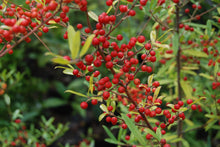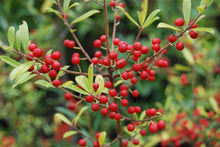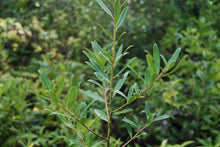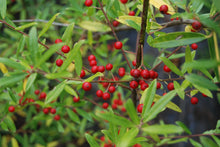Ilex myrtifolia (syn. I. cassine var. myrtifolia)
Regular price
$25.00
Sale
Myrtle-leaf Dahoon Holly. Dr. Michael Dirr of the University of Georgia gave me a collection of Dahoon Hollies, Ilex cassine, some years back, and I was attracted to this one in particular over all of the others. There is a beautiful similar selection of this plant in the S. C. Botanical Gardens at Clemson University, which I planted in 1967, but the leaves are slightly wider, and it was labelled Ilex cassine var. angustifolia. But the leaves of this are much narrower. After much research and contemplation, I think that this plant is better named Ilex myrtifolia. My first job out of graduate school was teaching in north Florida. Throughout the pine barrons of south Georgia, it was the predominant understory plant under the longleaf pines, Pinus palustris. This particular selection is a female, and it produces a copious crop of berries; although, I don't know which other holly species is pollinating it. It could possibly be our native Ilex opaca, of which we have quite a few surrounding our growing beds. Since the foliage is so fine, the fruit crop is displayed to great advantage as one can see from the pictures. It has a irregular conical habit of growth and could possibly get up to 20' in height, being ideal for a "neutral" screen, since the foliage has a matte finish. It can also be grown as a multi-trunk or single trunk specimen. I have seen quite a number of these on pine barrens in south Georgia with much variation in leaf size and berry production. In the environment which it is often found, it might be standing in water for weeks on end during the winter months, so this might be a good subject for planting where one has a "wet foot" problem. The berries are of the size that it can be an excellent source of food for even smaller birds. It grows well in full sun to part shade.
Zones 7-9








